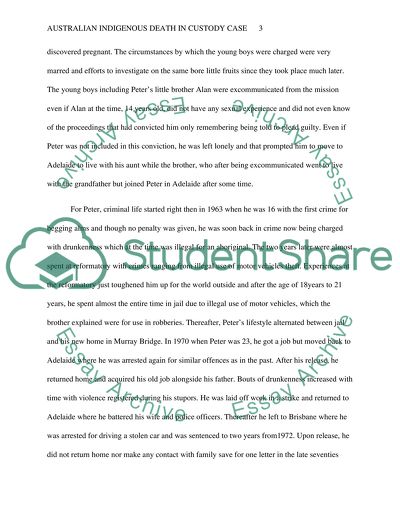Cite this document
(“Australian Indiginous Death in Custody Case Essay”, n.d.)
Australian Indiginous Death in Custody Case Essay. Retrieved from https://studentshare.org/sociology/1436726-australian-indiginous-death-in-custody-case
Australian Indiginous Death in Custody Case Essay. Retrieved from https://studentshare.org/sociology/1436726-australian-indiginous-death-in-custody-case
(Australian Indiginous Death in Custody Case Essay)
Australian Indiginous Death in Custody Case Essay. https://studentshare.org/sociology/1436726-australian-indiginous-death-in-custody-case.
Australian Indiginous Death in Custody Case Essay. https://studentshare.org/sociology/1436726-australian-indiginous-death-in-custody-case.
“Australian Indiginous Death in Custody Case Essay”, n.d. https://studentshare.org/sociology/1436726-australian-indiginous-death-in-custody-case.


